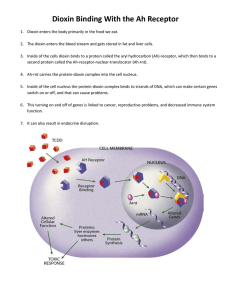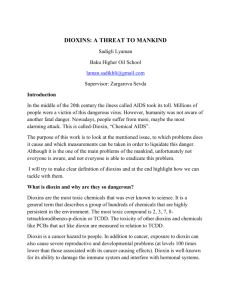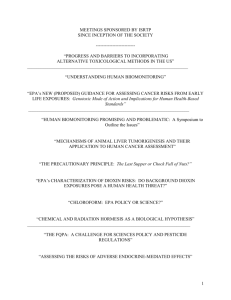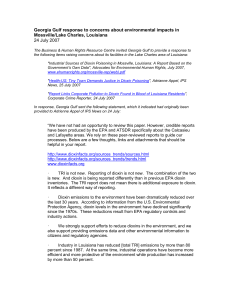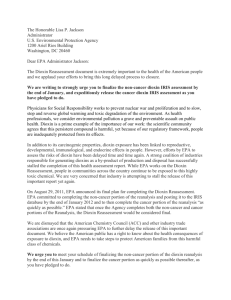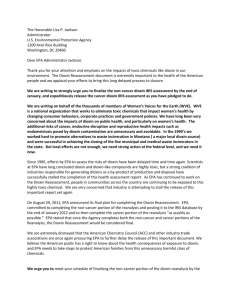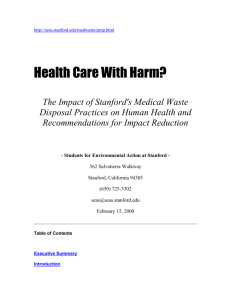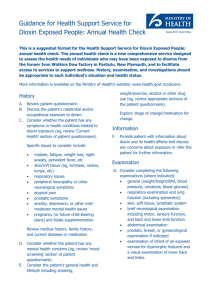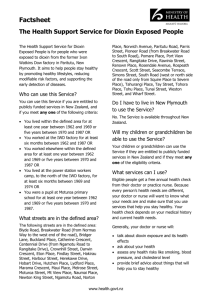Dioxins and Furans
advertisement
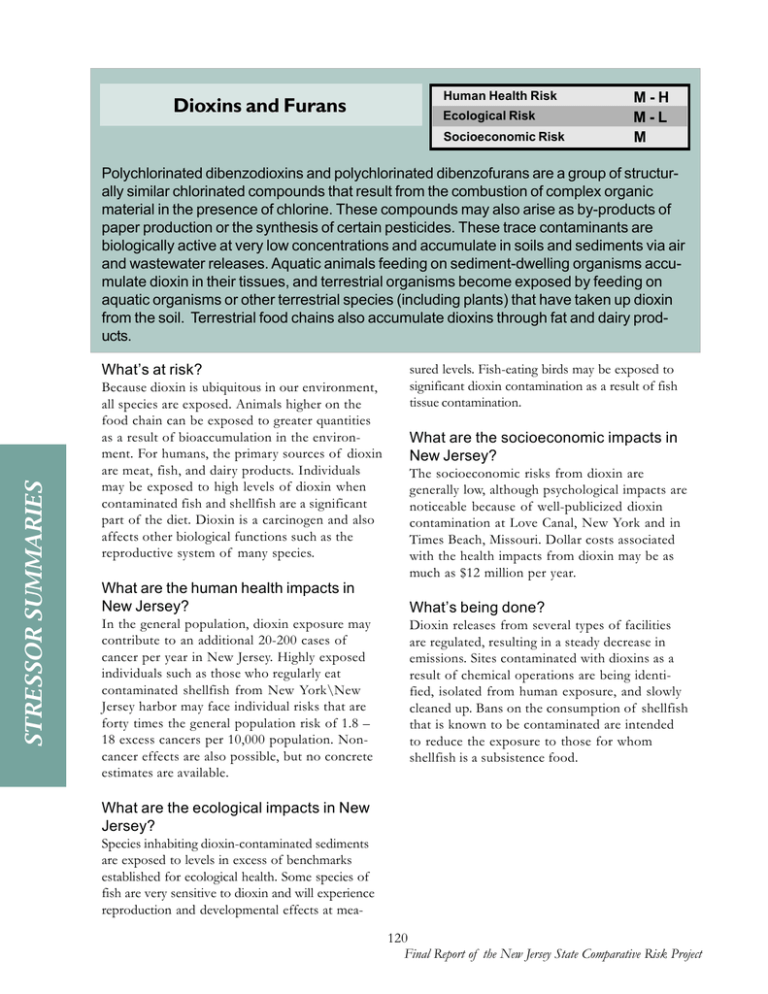
Dioxins and Furans Human Health Risk Ecological Risk Socioeconomic Risk M-H M-L M Polychlorinated dibenzodioxins and polychlorinated dibenzofurans are a group of structurally similar chlorinated compounds that result from the combustion of complex organic material in the presence of chlorine. These compounds may also arise as by-products of paper production or the synthesis of certain pesticides. These trace contaminants are biologically active at very low concentrations and accumulate in soils and sediments via air and wastewater releases. Aquatic animals feeding on sediment-dwelling organisms accumulate dioxin in their tissues, and terrestrial organisms become exposed by feeding on aquatic organisms or other terrestrial species (including plants) that have taken up dioxin from the soil. Terrestrial food chains also accumulate dioxins through fat and dairy products. STRESSOR SUMMARIES What’s at risk? Because dioxin is ubiquitous in our environment, all species are exposed. Animals higher on the food chain can be exposed to greater quantities as a result of bioaccumulation in the environment. For humans, the primary sources of dioxin are meat, fish, and dairy products. Individuals may be exposed to high levels of dioxin when contaminated fish and shellfish are a significant part of the diet. Dioxin is a carcinogen and also affects other biological functions such as the reproductive system of many species. What are the human health impacts in New Jersey? In the general population, dioxin exposure may contribute to an additional 20-200 cases of cancer per year in New Jersey. Highly exposed individuals such as those who regularly eat contaminated shellfish from New York\New Jersey harbor may face individual risks that are forty times the general population risk of 1.8 – 18 excess cancers per 10,000 population. Noncancer effects are also possible, but no concrete estimates are available. sured levels. Fish-eating birds may be exposed to significant dioxin contamination as a result of fish tissue contamination. What are the socioeconomic impacts in New Jersey? The socioeconomic risks from dioxin are generally low, although psychological impacts are noticeable because of well-publicized dioxin contamination at Love Canal, New York and in Times Beach, Missouri. Dollar costs associated with the health impacts from dioxin may be as much as $12 million per year. What’s being done? Dioxin releases from several types of facilities are regulated, resulting in a steady decrease in emissions. Sites contaminated with dioxins as a result of chemical operations are being identified, isolated from human exposure, and slowly cleaned up. Bans on the consumption of shellfish that is known to be contaminated are intended to reduce the exposure to those for whom shellfish is a subsistence food. What are the ecological impacts in New Jersey? Species inhabiting dioxin-contaminated sediments are exposed to levels in excess of benchmarks established for ecological health. Some species of fish are very sensitive to dioxin and will experience reproduction and developmental effects at mea120 Final Report of the New Jersey State Comparative Risk Project
